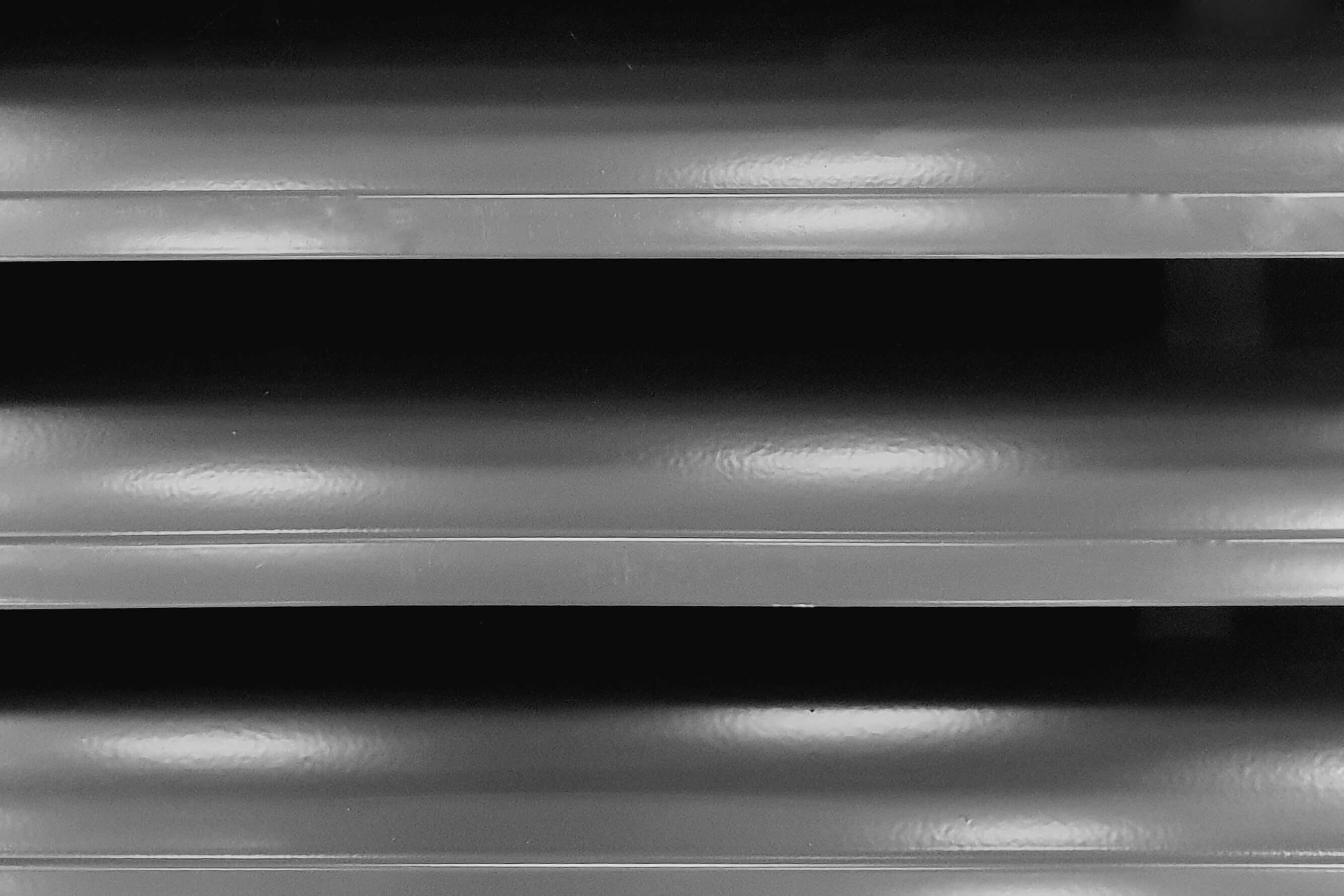
Latest
News
Designing A Best-In-Class Weather Louvre System | Maple

- About Maple (100)
- Car Parks (90)
- Office and Retail (47)
- Government (39)
- Rainscreen (36)
- Louvres (30)
- Education (24)
- Residential (24)
- Brise Soleil (22)
- Health (20)
- HSEQ (18)
- Commercial Blinds (16)
- Sustainability (15)
- Data centres (10)
- Pre-Construction services (10)
- Architectural facade (7)
- North West (2)
Maple have created a commercially compelling weather louvre system with an innovative aerodynamic blade profile that can be easily converted from single-bank to double-bank to deliver Class A performance.
• An innovative response to rising extruded aluminium costs
• ‘Clip on’ design provides unrivalled flexibility
• Effective ventilation without water ingress
• 75mm blade more cost-effective per m2 than other systems
• Purpose-designed blade profile delivers Class A performance
WEATHER LOUVRES ― THE STORY SO FAR
Airflow is essential in industrial and commercial buildings to provide clean air for people and machinery. However, it’s just as important to protect specific areas ― such as plant rooms containing electrical equipment or sensitive machinery ― from wind-driven rain. The solution is the installation of weather louvres, which use different types of blades or blade configurations to control and manage the amount of airflow, and keep out unwanted elements.
Weather louvres are not new and the many different systems on the market have remained largely unchanged for decades. However, as with many solar shading products, performance is not the sole consideration: today’s systems also need to be commercially compelling for customers and specifiers. That’s the challenge that has driven the development of Maple’s best-in-class weather louvre system.
TECHNICAL CHALLENGES
Louvres are designed for two seemingly contradictory functions: to allow airflow in (with a minimal drop in pressure) and to keep water/precipitation out. The profile of the louvre blades is designed to provide protection by ‘trapping’ water and not allowing it to enter the plant area or building, while permitting a natural flow of air without significant pressure drop.
What is pressure drop?
All louvres restrict the passage of air to some degree. This resistance is called the ‘pressure drop’. Too high a pressure drop and not enough air will be allowed through.
Striking the right balance has challenged manufacturers for years. To control water ingress and allow ventilation AND provide a screening benefit, a high-performance louvre system is required. Typically, this has been a ‘double-bank’ system ― which is more expensive.
Furthermore, when it comes to screening, no one likes to see machines or equipment through louvres screens, so architects typically specify systems that look solid ― leading to systems with more tightly spaced blades.
These requirements of cost, effectiveness and aesthetics are not only difficult to achieve, they are also often at odds with each other. What if clients didn’t have to choose one over the other? What if there was a flexible system that gave architects and end-customers the best of both worlds?
“We wanted a system that not only delivered high-performance, but gave architects and contractors more choice in design specification to meet different project requirements.”
Sean McGrath, Managing Director, Maple Sunscreening
MAPLE’S APPROACH
Our product development team set out to develop a weather louvre system that delivered best-in-class performances and compelling commercial benefits. We used Finite Element Analysis (FEA), Computational Fluid Dynamics (CFD) and data simulation, and combined it with years of knowledge and experience. Many prototypes were produced and tested. Our aim was to produce a single profile that permitted air passage with the least possible resistance, while stopping wind-driven rain.
Challenging the widely held view that a double bank of 50mm blades delivers significantly better performance in controlling water ingress, we initially focused on making a single bank of 75mm blades more effective ― and visually appealing. This was no easy task. ‘Pressure drop’ is harder to mitigate with larger blades, while the profile required to make larger blades effective can also make the finished result look ‘gappy’ from the outside (a 50mm system can look like a solid cladding panel when viewed from certain angles).
However, our development didn’t stop there. We also focused our efforts on creating a ‘clip on’ design feature that allowed a single-bank louvre system to be easily converted to double-bank for different elevations and applications... a solution that could deliver Class A or Class B performance but look identical from the front.
RESULT
The result of this extensive research and development was a new, innovative aerodynamic blade profile. The patent pending design keeps the core velocity of airflow to a maximum but prevents water ingress (other systems with protruding catchments tend to have higher resistance to airflow). Central to this ground-breaking design is the ability to clip on a Class A extension to the primary blade ― without removing the louvre screen from its position.
THE BUSINESS CASE
Improved efficiency and performance
Manufactured in extruded aluminium, the new design guides airflow above and below the blades ― resulting in an effective ‘laminate’ airflow with minimal turbulence. In response to architects’ aesthetic requirements, the advanced profile incorporates a front-facing lip that does not affect performance.
Installation efficiency
As well as performing well, a good louvre system must also be easy to install because longer fixing times can add unnecessary cost to a project. A double-bank system can take 50% longer to install ― so a more effective, single-bank system makes sense. However, that’s only part of the story. The ability to easily upgrade from single- to double-bank in situ makes sound commercial sense.
Commerciality
Installation costs are only part of the commercial argument. On average, extruded aluminium costs have increased by 40% over the past four years, and continue to be volatile. Reducing material costs on a higher-performing louvre benefits everyone from contractor to client.
A complete system
Our high-performance louvre can be changed from a single- to double-bank system using a unique clip-on design. The system also incorporates a drainage system to remove water that has been trapped. Add in its range of applications, including doors, and it’s a complete louvre system for all client specifications.
Flexibility
With increased flexibility comes better cost effectiveness. Not only can our new design create an effective single-bank system, it can be extended to a double-bank system without the need for additional brackets or modifications to the existing mullions. The additional blade can simply clip to the blade where the enhanced weather protection is required. This means architects can specify zones where Class A performance is required but specify less expensive, single-bank Class B profiles elsewhere ― all within the same system.
“The new system allows specifiers to choose a high-performing single-bank system that has distinct commercial benefits as less material is required. If true class-A performance is required, the system converts easily to a double-bank system.”
Sean McGrath, Managing Director, Maple Sunscreening
IN NUMBERS
• The new high-performance system sets new standards ― tested and certified by BSRIA to deliver Class A performance at wind speeds of up to 2 metres per second and Class B at 3 metres/second
• Designed to exceed the industry minimum of 95%, our new louvre delivery 99.7% efficiency
• Despite its greater width, the innovative design and shallower profile actually uses less metal than traditional 50mm blades.
